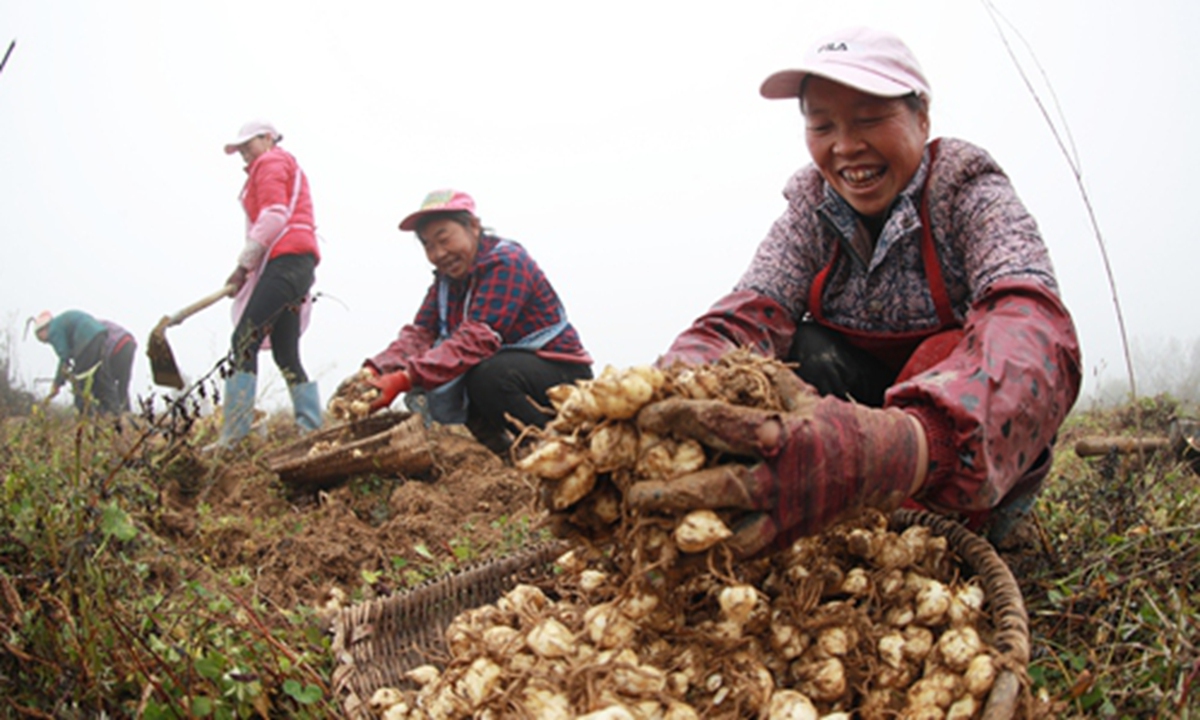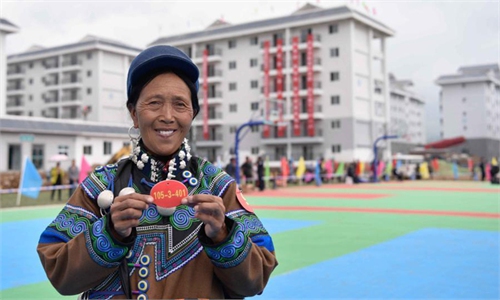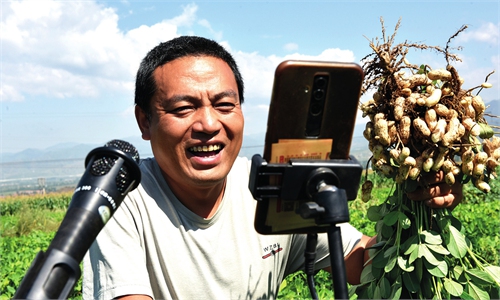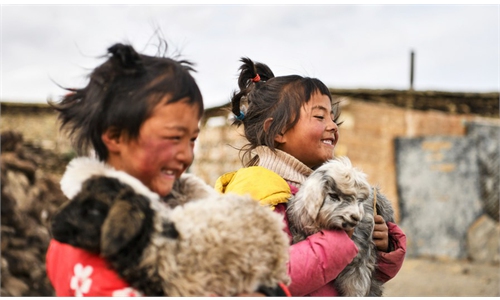
Villagers harvest lilies in Bijie, Southwest China's Guizhou Province. Photo: VCG
Through the joint efforts of all parties led by the government, China has lifted its rural population out of absolute poverty and removed all poverty-stricken counties from the poverty list, accomplishing the target of eradicating extreme poverty by the end of 2020, the Poverty Alleviation Office of the State Council announced last week.
As the world economy faces great vulnerabilities caused by the coronavirus pandemic, China's historic achievement of the elimination of extreme poverty, is an encouraging sign for the global anti-poverty efforts, boosting the confidence of other less developed countries to work hard and get rid of poverty.
In 2012, China had an impoverished rural population of nearly 100 million living below the current poverty line, with a total of 832 poor counties throughout the nation. Today, that number is zero.
The achievement is highly commendable, particularly as China has met the poverty eradication target set out in the 2030 Agenda for Sustainable Development of the United Nations 10 years ahead of schedule.
In particular, the difficulties and challenges brought about by the pandemic made the anti-poverty work a much more arduous task for China in 2020 than the previous years. During the months when most social and economic activities were suspended due to the prevention and control of the COVID-19 crisis, some poverty alleviation projects saw construction progress lagging behind schedule.
In early 2020, various lockdown measures also prevented poor rural residents from leaving their hometowns and working in the cities, leading to a reduction in their income levels. In addition, the impact of the contagion on various industrial and service sectors splintered employment, posing grave challenges for the government to overcome poverty.
The risk of relapsing to poverty for some folks because of the pandemic exists in China, which can also been seen in other countries around the world. A large number of people returned to poverty due to the public health crisis, putting great pressure on these countries' economies.
In the US, nearly 8 million Americans fell into financial difficulties in the July-November period, according to data released by the University of Chicago and the University of Notre Dame. Economists from the two universities indicate that the US poverty rate rose to 11.7 percent in November, a rise of 2.4 percentage points since June and also representing the biggest spike in the rate ever recorded in America.
As the pandemic onslaught continues all over the globe, assistance is now urgently needed for some countries where swaths of poor regions are ensnared by poverty. And, humanitarian disaster such as starvation should be avoided.
There is no denying that some global cooperation mechanisms have made efforts in helping alleviate poverty. For instance, the G20 has agreed on a certain framework for multilateral debt relief. But it is also important to note that despite such efforts, global poverty reduction work still faces great difficulties and challenges.
With many international institutions, mechanisms and leaders' summits expected to resume in various forms in the coming year, governments and non-government institutions are bound to have more opportunities to communicate. Global poverty eradication should be a topic of rising significance on these occasions. After all, in the face of the devastating COVID-19, global poverty reduction deserves more attention, international assistance and cooperation than ever.



